#other: paul schrader
Text
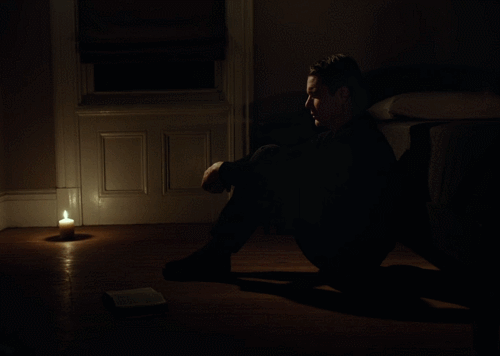
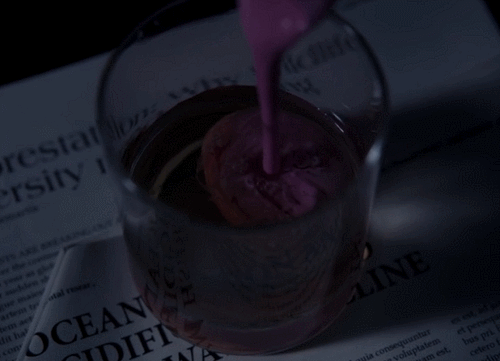

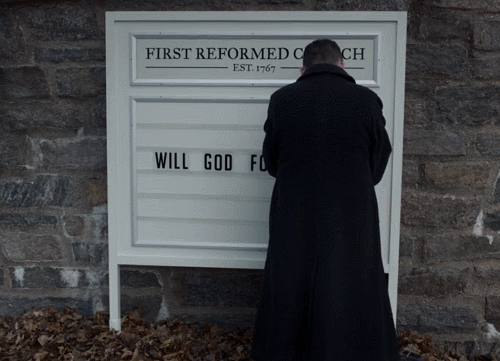

Are your garments spotless? Are they white as snow?
Are you washed in the blood of the lamb?
First Reformed (2017), dir. Paul Schrader
#first reformed#paul schrader#ethan hawke#filmedit#filmgifs#my posts#gifset#rewatched this the other day and pretty sure it's a top five movie
25 notes
·
View notes
Text
call me crazy but i think that taxi driver shouldn't be watched without the context that the guy thet wrote it also made american gigolo, light sleeper and patty hearst. that's just my opinion.
#im sorry#i will always insist that it's paul schrader who made taxi driver not martin scorseses#if you watch literally any other movie schrader made you'd realize#how travis is very much um a villain and actually bad#idk#im not a filmbro i just adore paul schrader what about it
2 notes
·
View notes
Text
~~~~~~~~~ | M Y H E A D C A N O N S | ~~~~~~~~~

~~~~~~ | A N E W Y E A R W I T H Y O U | ~~~~~~
Summary: Neither of you know where exactly you stand as you celebrate the new year.
Pairing: Christian Pulisic x Reader
Requested: Yes
Song Inspo: Clearest Blue - CHVRCHES
Warnings: fluff, situationship to relationship, feelings of confusion, film student!reader because why not?, not edited
Notes: this is just a headcanon...did you like it? would you like more of them in the future?? i also got a little carried away....oops...anyway, feedback is always appreciated!!!
~~~~~~~~~~~~~~~~~~~~~~~~~~~~~~~~~~~~~~~~~~~~~
To you, your relationship with Christian was a bit of an enigma. You had no idea what you were.
You had met each other through Kai's girlfriend, Sophia, whom you had randomly met when your coffee orders had been mixed up. A few months into your friendship, she had insisted that you came along to a games night that she and Kai were hosting.
At first, you were apprehensive about it, unsure if their friends, footballers with a level of fame you couldn't begin to imagine, were going to accept you, a film student, who worked two jobs to pay for your shitty, little apartment. But you quickly realised your worries were for nothing.
And you also came to quickly realise Sophia's true intentions.
The couple had already picked the teams before any of you had even arrived. They made some excuse about not wanting Mason and Ben being on the same team, when in reality, they were just making sure that you and Christian were paired together.
At first, you were a little shy around each other, saying very little unless it was needed. But when you began to play a round of Jeopardy and one of the categories was film & TV, you quickly impressed him with your ability to recall facts about films, shows and directors he didn't even know existed.
When he asked how you even knew such facts like how Paul Schrader wrote the film Taxi Driver in two weeks, or how it was James Cameron himself that drew the charcoal picture of Kate Winslet, you simply shrugged your shoulders and said you were a film student.
A couple days after the games night, and multiple hours of debating whether or not to message you, Christian, after getting your number from Kai, had finally messaged you.
To say you were feeling a little bit of a thrill when you saw his name attached to the message was an understatement.
And so the next five months began...
At first it was just getting coffee together on the mornings when you both had the time for it. You both met in the same spot: a small, independent coffee shop, that doubled as bookstore. But this quickly turned into him bringing you lunch one afternoon, after you had told him you couldn't make it to one of your "coffee dates."
You had told him you were going to be stuck in the library all day, attempting to finish an assignment at the very last minute, and for him to not think that you had stood him up. That day, when he showed up with lunch for the two of you, easily convincing you to take a break, you knew your crush was so much more than a crush.
After that, your morning coffees became brunch, or even dinner, if you both had the time for it. Christian had even attempted to cook you his favourite dish, but when you turned up at his, the smoke alarm was going off and you had found Christian, with a dishcloth in his hand, trying to get the smoke to go out of the patio doors.
You learnt that day that Christian possessed no ability to cook.
You eventually settled on pizza and shared your first kiss, of which he made the first move, before the ending credits of your favourite film were rolling.
Your first kiss were the many of firsts with him: your first Chelsea match, sitting next to Sophia, who explained the bits you didn't understand, your first time meeting his sister, an slightly awkward encounter over facetime, which had Christian stuttering and stumbling over his own words when she had asked if you were the secret girlfriend, and the reason behind him smiling so much, you first "sleepover" and a manner of other things.
And yet neither had the courage to ask the other what you were to each other.
Christian wasn't just falling in love with you, he WAS in love with you, and he had planned to finally tell you on New Years Eve.
The NYE celebrations were happening in the very first place that you two had met: at Kai and Sophia's place. And Christian had been keeping close attention to the time. When you asked what was distracting him, he justshook his head, gave you a smile, and told you he was just distracted by your outfit, which only earned him a playful smile and a shoft shove of the arm.
For most of the night, you both stood off to the side, content with each other's company, and playing a little game you had both come up with. It was trying to guess what conversations people were having from the expressions they were pulling.
You had danced a little, but it had only happened because Sophia had managed to convince you to, and for the whole time, Christian's attention was only on you.
He had even told one woman that he was here with his girlfriend, which you weren't officially, not yet, when she attempted to flirt with him. He loved how easy it was for him to call you his girlfriend.
His girlfriend....
When it finally came to counting down to the new year, his focus was completely on you. He had even forgotten to count down, of which you had noticed, after you had counted down to seven and hadn't heard his voice.
So when you turned your to face him, you hadn't expected to find him looking at you. There was a look of love in his eyes and you had even thought they had twinkled for a second, but you had convinced yourself it was just the lights. When you went to ask him what was wrong, he cuts you off with a kiss.
And it wasn't one of your usual kisses. There was a hidden message behind it. A message of love.
So when everyone around you was cheering, shouting happy new year at the top of their lungs, and couples were trading notions of affection, Christian released three very important words.
"I love you."
You wrapped your arms around his neck and pulled him in for another kiss, which he could only presume was a good thing. When you pulled away, you stroked his cheek lovingly with your thumb and smiled as you replied, "I know." He raised his eyebrows and you giggled, telling him, "you sometimes talk in your sleep and last week you said 'I love you, Y/N.' I love you too, by the way."
Both of you had ended the previous year not knowing where you stood with the other and had started the new year knowing exactly where you now stood.
~~~~~~~ | F O O T B A L L T A G L I S T | ~~~~~~~
Football taglist: @shanoontje @maseandkepa @theblxefox @blueathens @ofxinnocence @1-800-benji-chilwell @mrschilly @geek-and-proud @in-my-body-bag @laurasstufff1 @mountchilly @spicysainz @greykitkepa
if you wished to be tagged in what i write please let me know
#christian pulisic#christian pulisic imagine#christian pulisic blurb#christian pulisic fic#christian pulisic fanfic#christian pulisic fluff#christian pulisic one shot#christian pulisic x reader
366 notes
·
View notes
Photo

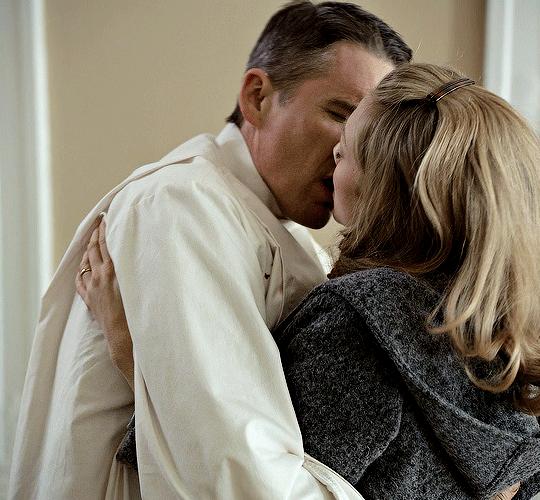
Director Paul Schrader on the ending of First Reformed (2017):
I don’t know what the ending is. It can be read in either one of two ways. One, that a miracle has occurred and his life is spared. The other is equally, in my sense, optimistic, which is that he drinks the Drano and he’s on all fours. He’s throwing up his stomach and God comes over to him, who has not talked to him for the whole movie, and says, “Reverend Toller, you wanna know what Heaven looks like? Here it it is. This is exactly what it looks like: It looks like one long kiss. And that’s the last thing he sees.”
#first reformed#a24edit#filmedit#ethan hawke#ehawkeedit#tuserdana#underbetelgeuse#userairam#userlera#userrobin#userveronika#useranimusvox#userlar#tusershay#usersameera#userconstance#*#only clicked while making this set that he still had the barbwire on when they were HUGGING AND KISSING#'heaven looks like one long kiss' god damn mr paul schrader
380 notes
·
View notes
Note
top ten first watches of 2023?
I assume you mean films, right? Anyway, top 10 in no particular order.

Crash was a long time coming, but it took a podcast I used to listen to weekly to finally get to this Cronenberg classic. Bodily modifications? Violent eroticism? Body as a machine? Death & eroticism? It has it all and much more.
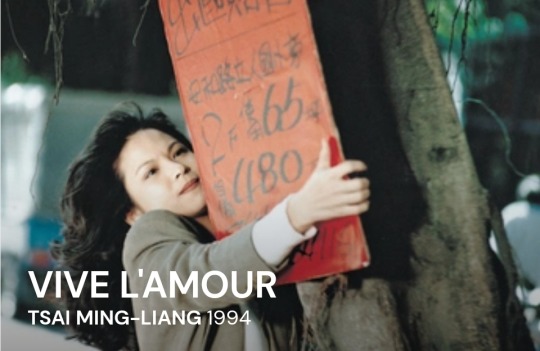
For those of you in your 20s and 30s (or even older) who feel alienated in the urban landscape, surrounded by crowds whilst feeling lonely and yearning for any type of human connection, this film is for you.
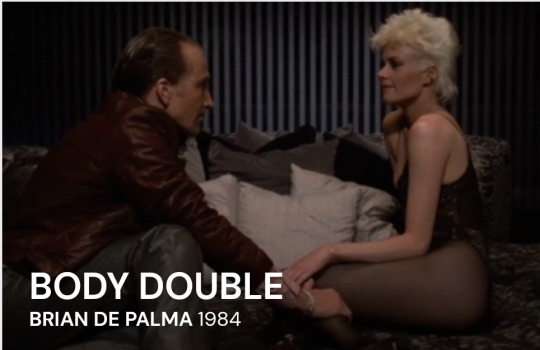
It's no secret that Brian de Palma wanted to be Hitchcock since he was a baby (I assume, but it sure does look so). You can see it in so many movies of his and Body Double is a perfect example. It even has the misogyny down to a T. But it's also really good and I'm a fan of voyeurism in cinema (from a critical position mostly). This is like Rear Window and Vertigo mashed together, but with 80s hair.

Now this was probably the highlight for me this year. Editor by day, sex worker by night, Kathleen Turner is a force in this film, alongside Anthony Perkins, the perverted priest. But if that is not enough to do the trick, the cinematography and that anal sex scene might do the trick 😉

Who knew Joan Crawford had such a big issue with wire hangers? Not me, but I sure found out in that crazy scene that has one of the most memorable meltdowns in cinema. Every shot of Faye Dunaway screams "I want that Oscar, god damn it!"
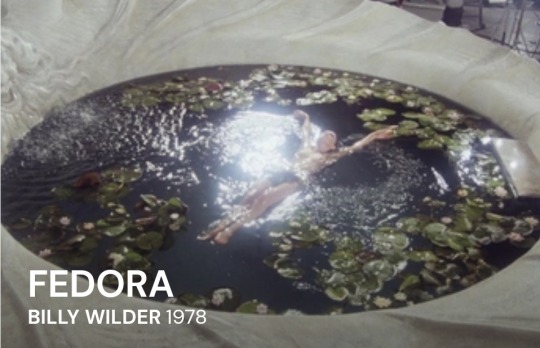
Fedora is the late 70s version of Sunset Boulevard and it has the same director. Not as good as that classic, but my god, the clothes! I'd watch it again just for the clothes, particularly that white suit Fedora is wearing in the garden of her villa when she receives that honorary Oscar.
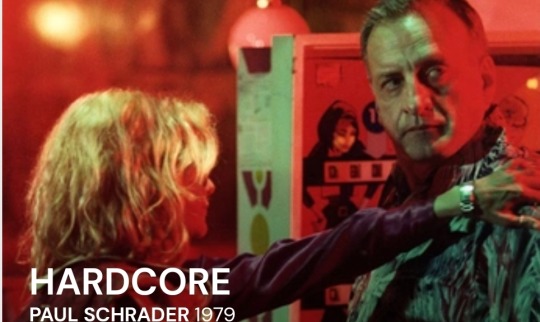
I don't think there's any Paul Schrader film that I didn't like. It wouldn't make sense to call him underrated, but he's better than others from that 1970s gang (cough *de Palma* cough). In Hardcore, a father finds out his daughter went to Los Angeles and started acting in porn. He gets the confirmation when he actually sees her in one film in some shady movie theater. It's a weird and very uncomfortable scene and by comparison, not much, knowing how it will unfold later.

Of course Madonna is always in control of her image and what she allows to be seen or how she comes across. But that doesn't mean there's nothing genuine there, on the contrary. And the camera captures that. The backstage, the everyday conversations, the relationship with the dancers. Real people with real emotions and the more darker parts are allowed to slip in through the cracks. On top of that, it has footage from her tour in 90-91, a reminder of how Madonna is one of the best performers out there, making me wish there'd be a time machine so I can see her live during that time.
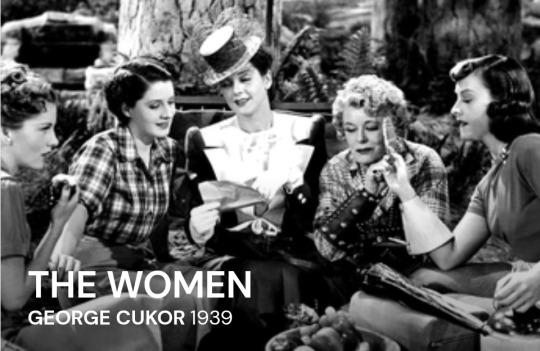
For anyone who is a fan of Sex and The City, how about a late 1930s version? Fast pace dialogue, outfits to die for and a cast made almost entirely of women.
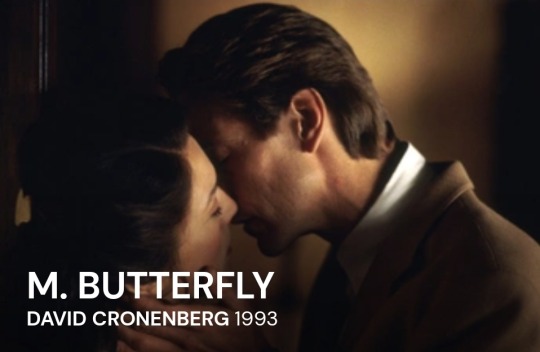
The second Cronenberg on the 2023 list. I watched M. Butterfly after seeing Madame Butterfly at the opera. The film is slightly different and it deals with some of my favorite themes in fiction and media lately: gender identities, criticism of colonialism, orientalist fantasies that obscure realities and so much more.
#m thoughts#top 10 films in 2023#crash david cronenberg#m butterfly#body double#hardcore 1978#fedora billy wilder#mommy dearest#women 1939#in bed with Madonna#crimes of passion#vive l'amour
20 notes
·
View notes
Text
[exert of a conversation between Martin Scorsese, Paul Shrader, and Roger Ebert from 1976 regarding Scorsese’s 1973 film Goncharov]

…
Scorsese: Because there's a lot of violence to this picture, some of the New York reviews are calling it an exploitation film. Jesus! I went flat broke making this film! My films haven't made a lot of money, you know? Right now, I'm living off my next film.
Schrader: If it's an exploitation film, I wish we had a dollar for every time you were told it would never be a success at all. That screenplay got turned down by everybody.
Scorsese: We showed it to some New York media educators, and I thought we'd get lynched! We showed it to some student editors...there was this wise guy there I recognized from a screening we had of "Alice." He asks whether, after all my success, I'm about ready to fall on my ass. I've hardly gotten started!
Schrader: You got zero valid reactions immediately after the screenings. The immediate response is usually very visceral and angry, but I remember, this one, silence. The anger came later. But, if this film weren't controversial, there'd be something wrong with the country.
Ebert: What you give us in this guy, Goncharov, who comes from nowhere - we get hardly any background - eventually we realize he's seething inside, he's got all this violence bottled up....
Scorsese: And he goes back again and again to where the violence is. One of the reviewers, I think it was Andrew Sarris, said how many times can you use [The Clocks] as a metaphor for hell? But that's the thing about hell - it goes on and on. And he couldn't get out of it. But you're right that we don't tell you where he comes from, or what his story is. Obviously, he comes from somewhere and he picked up these problems along the way.
Schrader: You told me you wrote it that way after thinking about the way they handled "In Cold Blood." They tell you all about Perry Smith's background, how he developed his problems, and immediately it becomes less interesting because his problems aren't your problems, but his symptoms are your symptoms.
Ebert: Pauline Kael has said that Scorsese, Robert Altman and Francis Ford Coppola are the three most interesting directors in the country right now - and that it might be due to their Catholicism, that after Watergate, the nation feels a sort of guilt and needs to make a form of reparation, and that Catholics understand guilt in a way that others don't, that they were brought up on it.
Scorsese: Guilt. There's nothing you can tell me about guilt.
Schrader: I've got a lot of Protestant guilt.
Scorsese: You can't make movies any more in which the whole country seems to make sense. After Vietnam, after Watergate, it's not just a temporary thing; it's a permanent thing the country's going through. All the things we held sacred - the whole Time-Life empire...whoosh! Well, Time's still left.
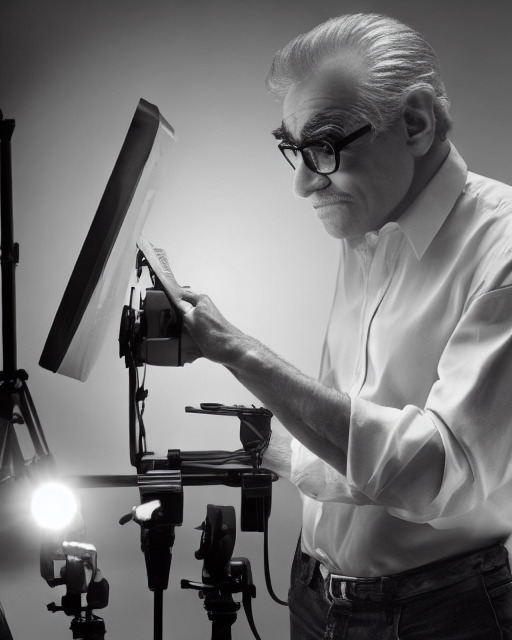
Ebert: In a lot of your movies, there's this… ambivalent attitude, toward women. The men are fascinated by women, but they don't quite know how to relate to them...
Scorsese: The goddess-whore complex. You're raised to worship women, but you don't know how to approach them on a human level, on a sexual level. That's the thing with Katya, with Sofia, he loves them but he doesn’t really see them as people. They go from garbage to goddess and back and forth.
Ebert: I’m reminded of Katya with the candles in her bedroom.
Scorsese: Exactly, she's like a saint to him! He can't imagine these people treating her the way they do. Before he goes to avenge her, it's almost like he cleanses himself, like in "The Virgin Spring" when Max von Sydow scourges himself with the branches before he goes out to avenge his daughter's death.
Schrader: We actually had that shot in the movie, and we took it out. Goncharov whips himself with a towel before he goes out with his guns. We took it out because it looked a little forced and unnatural.
Scorsese: But the Catholic thing? I suppose there are a lot of Catholic references in the film, even if they're only my own personal reference. Like the moment when he burns the flowers before he goes out to kill. And when he's buying the guns and the dealer lays them out one at a time on the velvet, like arranging the altar during Mass.
…
179 notes
·
View notes
Text
What Was So Special About Greta Garbo?
An enigma onscreen and off, the actress only magnified her celebrity by suddenly renouncing it.
By Margaret Talbot
December 6, 2021
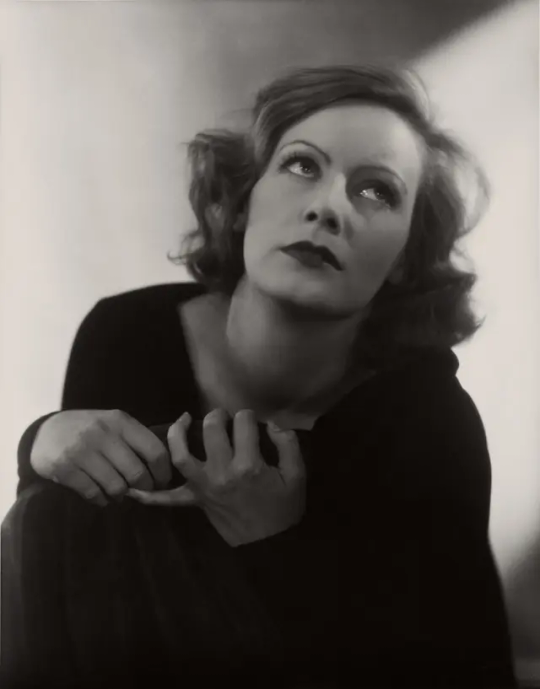
“If only once I could see a preview and come home feeling satisfied,” Garbo said.Photograph by Edward Steichen © 2021 The Estate of Edward Steichen / ARS, courtesy the George Eastman Museum
Fame is so powerful that renouncing it can seem like the supreme power move. Celebrities who retreat from the public eye (Howard Hughes, J. D. Salinger, Prince) will always be legends, no matter what else they may be. Rumored comebacks tantalize. Paparazzi circle. The mystery deepens. In 1941, at the age of thirty-six, Greta Garbo, one of the biggest box-office draws in the world, stopped acting and, though she lived for half a century more, never made another film. For a star who, more than any other, “invaded the subconscious of the audience,” as Robert Gottlieb writes in his new biography, “Garbo” (Farrar, Straus & Giroux), this was an abdication, a privilege of monarchical proportions. But it was also a decision made by one particular, peculiar person who had never been temperamentally suited to celebrity in the first place. There was a reason, beyond the exertions of the Hollywood publicity machine, that a single line she uttered in one movie—“I want to be alone”—became so fused with her image. What can look like a strategy for keeping the public interested can also be a sincere and committed desire to keep it at bay.
Few other performers have ascended as quickly to mononymic status as Garbo did—she started off the way most of us do, with a first and last name, but the first soon fell away, like a spent rocket booster, in the ballyhoo surrounding her. When she appeared in her first sound picture, “Anna Christie,” the ads proclaimed, “Garbo talks!”; for her first sound comedy, “Ninotchka,” it was “Garbo laughs!” Quite why she became such a phenomenon is a puzzle to which film critics and biographers keep returning. Garbo made only twenty-eight movies in her lifetime. (By comparison, Bette Davis made close to ninety, and Meryl Streep has made nearly seventy and still counting.) That slender output could be part of the mystique, compounded by her disappearing act. But Garbo had acquired an enigmatic mythos even before she ended her career—the Hollywood colony treated her like royalty. Nor has it seemed to matter that only a handful of her movies are much watched or admired today.
What Garbo had to offer, above all, was her extraordinary face, at a time when the closeup, with its supercharged intimacy, its unprecedented boon to the emotional and erotic imagination, was still relatively new. Many of the shots credited as the first closeups were unlikely to have set hearts aflame, since they were often of objects—a shoe, a wrench. But filmmakers soon grasped the centripetal seductions of the human face in tight focus. The screenwriter and director Paul Schrader picks as a turning point the moment in a D. W. Griffith film from 1912, “Friends,” in which the camera comes in tight on Mary Pickford’s face, revealing her ambivalence about which of two suitors she should choose. “A real close-up of an actor is about going in for an emotional reason that you can’t get any other way,” Schrader writes. “When filmmakers realized that they could use a close-up to achieve this kind of emotional effect, cameras started coming in closer. And characters became more complex.”
A face as beautiful as Garbo’s—the enormous eyes and deep-set lids, the way love or tenderness or some private, unspoken amusement unknit her brows in an instant, melting her austerity—was almost overwhelming when it filled the screen. She belonged, as Roland Barthes wrote, “to that moment in cinema when the apprehension of the human countenance plunged crowds into the greatest perturbation, where people literally lost themselves in the human image.” This is not to diminish her craft as an actress. But her acting was perhaps most effective in her silent films or in nonverbal scenes in talking pictures in which her face is the canvas for emotion. In the famous last shots of “Queen Christina” (1933), Garbo’s androgynous Swedish ruler stands at the prow of a ship bearing her away from her country; the body of her lover, killed in a duel over her, is laid out on the deck. Garbo stares into the distance, her face a kind of mask but no less eloquent for it. The film’s director, Rouben Mamoulian, had told her that she must “make her mind and heart a complete blank,” empty her face of expression, so that the audience could impose whatever emotions they wanted on it. The scene would then be one of those “marvelous spots,” he said, where “a film could turn every spectator into a creator.”
She was skilled at inciting such projection. More than one contemporary in Hollywood noted that her magic truly showed up only on celluloid, like a ghostly luminescence undetectable until the film was developed. Clarence Brown, who directed Garbo in seven films, recalled shooting a scene with her, thinking it was fine, nothing special, then playing it back and seeing “something that it just didn’t have on the set.” On her face, he said, “You could see thought. If she had to look at one person with jealousy, and another with love, she didn’t have to change her expression. You could see it in her eyes as she looked from one to the other.” Garbo herself, with a kind of arch, adolescent indifference, never wanted to look at the rushes. According to Brown, she’d watch only when sound pictures were played in reverse: “That’s what Garbo enjoyed. She would sit there shaking with laughter, watching the film running backward and the sound going yakablom-yakablom. But as soon as we ran it forward, she wouldn’t watch it.”
Much has been written about Garbo over the years, but Gottlieb, a former editor of this magazine, has produced a particularly charming, companionable, and clear-eyed guide to her life and work—he has no axe to grind, no urgent need to make a counterintuitive case for her lesser movies, and he’s generous with his predecessors. By the end of the biography, I felt I understood Garbo better as a person, without the aura of mystery around her having been entirely dispelled—and, at this point, who would want it to be?
The actress who came to embody a kind of unattainable elegance, who would someday wear sumptuous period costumes with a grace so offhand that they might have been rumpled p.j.’s, grew up in a cramped apartment with no indoor plumbing, in one of Stockholm’s most impoverished neighborhoods. She was born Greta Lovisa Gustafsson on September 18, 1905, to parents from rural stock. Her mother was, in Gottlieb’s description, “practical, sensible, undemonstrative”; her father, an unskilled laborer, was handsome, musical, and fun, and Greta adored him. But he was stricken by kidney disease, and Greta, the youngest of three children, made the rounds of the charity hospitals with him. “She never forgot the humiliations they endured as poor people in search of live-or-die attention,” Gottlieb writes. She was fourteen when he died, and she dropped out of school, leaving her with a lasting embarrassment about her lack of formal education. She went to work to help support the family, first at a barbershop, where she applied shaving soap to men’s faces, then at a department store, where she sold and modelled hats. She said later that she was “always sad as a child for as long as I can think back. . . . I did some skating and played with snowballs, but most of all I wanted to be alone with myself.”
Alongside her shyness and her penchant for solitude, Greta harbored a passionate desire to be an actress. As a kid, she’d roam the city by herself, looking for theatres where she could stand at the stage door and watch the performers come and go. The first time Garbo was in front of the camera was at age fifteen, in an advertising film for the department store that employed her. Sweden had a thriving film industry, and she soon quit her day job to appear in a couple of movies. At Stockholm’s Royal Dramatic Theatre, to which she was accepted at seventeen, the young actors were instructed in a system that “scientifically” analyzed the semiotics of movement and gesture. Remarkably, some of her lecture notes from that time survive—she jotted down that “the head bent forward equals a mild concession” or a “condescending attitude,” and that “the throwing back of the head” conveys “a violent feeling such as love.” Barry Paris, an earlier biographer whom Gottlieb cites approvingly, notes that “Garbo in silent films would employ that system of gestural meaning to a high degree.” She did so in her sound pictures as well. When she plays the Russian ballerina in “Grand Hotel” (1932), her body language is jittery, neurotic. Depressed, she lets her head droop as if it were simply too heavy to hold up; surprised by delight at the prospect of a romance with John Barrymore’s gentleman jewel thief, she tosses her head back at giddy angles. It might have been laughable, but instead it’s riveting.
In the spring of 1923, the gifted film director Mauritz Stiller approached the Stockholm theatre looking for actresses to cast in his new movie, an epic based on a Swedish novel, “The Story of Gösta Berling.” Stiller came from a Jewish family in Finland; orphaned young, he had fled to Sweden to avoid being conscripted into the tsar’s Army. Garbo and he were never lovers—Stiller preferred men—but their relationship was perhaps the most important in both of their lives. With his commanding height, his taste for luxury (full-length fur coats, a canary-yellow sports car), and his domineering style with actors, he had more than a touch of the Svengali. But Stiller believed in Garbo at a time when, as one veteran actress put it, Greta was “this little nobody . . . an awkward, mediocre novice,” and he loved her. (He also seems to have been the one who suggested replacing “Gustafsson” with “Garbo.”)
When Hollywood came calling—in the form of Louis B. Mayer scouting European talent for M-G-M—it wasn’t clear whether Stiller was the lure or Garbo; the director was certainly better known. In any case, Stiller made sure that they were a package deal (and, Gottlieb adds, later upped Garbo’s pay to four hundred dollars a week, an “unheard of” salary for an untested starlet). The two sailed for the United States in 1925, arriving in the pungent heat of midsummer New York. (Garbo’s favorite part of the visit seems to have been the roller coaster at Coney Island.) Then it was on to Hollywood by train.
The studio moguls gave an unknown such as Garbo a very short runway. M-G-M signed up the Swedish girl for two pictures, “Torrent” and “The Temptress,” and, as the film historian Robert Dance writes in his smart new book, “The Savvy Sphinx: How Garbo Conquered Hollywood” (Mississippi), “if those first two films were unsuccessful financially M-G-M would not renew her contract for a second year.” As it happened, both were hits. Motion Picture was among the industry outlets declaring her début “a complete success.” (“She is not so much an actress as she is endowed with individuality and magnetism,” it said.) Garbo became a fan favorite, even though she was almost uniquely averse to the kind of goofy stunts and mildly salacious photo shoots that other stars put up with. When she got to be as famous as Lillian Gish, she told one interviewer early on, “I will no longer . . . shake hands with prize-fighters and egg-and-milk men so they will have pictures to put in the papers.” Instead, she worked with consummate portrait photographers who lit her gloriously. Eventually, her films were earning enough that she was able to negotiate an unusual contract, one that gave her the right to veto scripts, co-stars, and directors. And she shunned interviews so consistently that in the end her privacy became its own form of publicity.
Despite such badassery, she never really adjusted to her new country or her new destiny, at least beyond the movie set. What looked like carefully cultivated hauteur was partly the product of awkwardness, disorientation, and grief. She hardly spoke English when she first arrived, and, within a year, she learned that her beloved sister, an aspiring actress herself, had died back home. Stiller did not make a smooth adjustment to Hollywood and, in a blow to them both, he was not chosen to direct Garbo’s first American picture. Garbo wrote to a friend in Sweden about how miserable she was: “This ugly, ugly America, all machine, it is excruciating.” The only thing that made her happy, she claimed, was sending money to her family. At a young age, Gottlieb writes, she found herself “trapped in a spotlight extreme even by Hollywood standards,” and with no psychological preparation for grappling with the kind of fame—movie stardom—that was new not just to her but to the world.
Athletic and physically restless, she soon took up the long nighttime walks that became a refuge; with her hat pulled low over her head, as it customarily was, she would have been hard to recognize. Stiller, who probably felt that his young protégée no longer needed him, returned to Sweden, where he died in 1928, at the age of forty-five, reportedly clutching a photograph of her. “He never seems to have resented her dazzling ascent to fame,” Gottlieb writes, “only wanting her to be happy and fulfilled.” Back in Sweden to mourn him, Garbo went with his lawyer to the storehouse containing his possessions, where she walked around touching his belongings and murmuring about her memories. Gottlieb says that this episode must surely have been an inspiration for the scene in “Queen Christina” in which Garbo’s character moves around a room at an inn, touching all the inanimate reminders of the lover she will never spend another night with. On sets, she would sometimes talk softly to herself about what her mentor might have told her to do—one director she worked with referred to Stiller as “the green shadow.”
Garbo appears to have been emotionally stunted in certain ways, damaged by the loss of her father, her sister, and Stiller, abashed by the limitations of her English and her education. Though she had a sense of humor, she emerges in Gottlieb’s portrait as prickly, stubborn, and stingy. The sudden onslaught of celebrity made her more so. She never married, had children, or apparently wanted to do either; she had brief romantic relationships, mostly with men (the actor John Gilbert, probably the conductor Leopold Stokowski), and likely with women, too (the leading candidate seems to have been the writer Mercedes De Acosta, the “ubiquitous lesbian rake,” in Gottlieb’s words, who had affairs with Marlene Dietrich and many others). Her longest-lasting relationships were with friends, especially, as Gottlieb makes clear, those who helped her logistically, advised her devotedly, and steadfastly refused to spill the tea about her. In these, she had pretty good, if not unerring, taste. Probably the closest and most enduring friendship was with Salka Viertel, the intellectually vibrant woman at the center of L.A.’s remarkable community of refugee writers, composers, and filmmakers from Germany.
From the start of her Hollywood career in silent pictures, Garbo was often cast as a vamp—the kind of man-eater who shimmied and inveigled and home-wrecked her way through so many nineteen-twenties movies. (See the entire career of Theda Bara.) As Robert Dance notes, “Adultery and divorce were catnip to post World War I audiences.” The parts quickly bored her: “I cannot see any sense in dressing up and doing nothing but tempting men.” Off the job, she eschewed makeup and liked to dress in slacks, men’s oxford shoes, and grubby sweaters. Her closet was full of men’s tailored shirts and ties. She often referred to herself as a “fellow” and sometimes signed her letters “Harry” or “Harry Boy.” The movie role she seems to have liked best was the learned cross-dressing seventeenth-century monarch Christina; it allowed her to stride around in tunics, tight-fitting trousers, and tall boots, to kiss one of her ladies-in-waiting full on the lips, to declare that she intended to “die a bachelor!” (As plenty of gender-studies scholars will tell you, this is one queer movie.) She expressed a longing to play St. Francis of Assisi, complete with a beard, and Oscar Wilde’s vain hero Dorian Gray. In today’s terms, Garbo might have occupied a spot along the nonbinary spectrum. Gottlieb doesn’t press the point, but remarks, “How ironic if ‘the Most Beautiful Woman in the World’ really would rather have been a man.”
Her third American film, “Flesh and the Devil” (1926)—the ultimate nineteen-twenties title—transformed her into an international star. It’s about a love triangle involving two best friends, played by the magnetic John Gilbert and the handsome Swedish actor Lars Hanson, with Garbo at its apex. It, too, is a pretty queer movie, though it seems less in control of its signifiers than, say, “Queen Christina.” As Gottlieb points out, the two male leads are forever clasping each other fervently, bringing their faces close together, as if about to kiss. (It heightens the vibe that, in silent-movie fashion, Hanson appears to be wearing lipstick some of the time, and Gilbert eyeliner.) “Flesh and the Devil” also features some of the most erotic scenes I’ve ever encountered on film. There’s one, in a nighttime garden, in which Garbo rolls a cigarette between her lips, then puts it between Gilbert’s, her eyes never leaving his, as he strikes a match and illuminates their gorgeous, besotted faces. There’s one where she lies back in sensual abandon on a couch, Gilbert’s head lolling against her lap, and he lifts her hand and drags her fingers across his mouth. And then there’s my favorite: she and Gilbert are at a Communion rail in church. By now, Gilbert’s character has killed her first husband in a duel, and she has married the other friend, but they’re still crazy about each other, natch. Gilbert sips from the chalice just before she does, and, when the priest hands it to her, she turns it around to drink greedily from the side her lover’s lips have just touched. Her expression is one of slow-burn ecstasy.
Gilbert and Garbo fell in love while they were making the movie, but their story is a sad one, mainly because Gilbert is a sad figure. He is often offered up as an example of an actor who couldn’t make the transition to sound—his voice was said to have been too reedy or something. That turns out to have been an urban legend: his voice was fine. The trouble was that he was best at playing boyish men undone by love at a time when, as Gottlieb observes, Depression-era Hollywood was more into “gangsters, snappy dialogue, musicals.” Garbo and Gilbert lived out a “Star Is Born” trajectory. When they made “Flesh and the Devil,” he was a big-name actor at the height of his powers, and he helped Garbo by making sure the camera angles were right for her and each take of her was the best it could be. One story is that he planted a stand of trees on his property in the Hollywood Hills to remind her of the woods in Sweden, and he apparently proposed to her repeatedly. (She professed herself puzzled that she kept refusing a more permanent bond, but she did.) By the time she made “Queen Christina,” in 1933, she had top billing, and she insisted that Gilbert, who was then married to someone else, and professionally on the skids, play her romantic interest—rejecting the studio’s choice, a young Laurence Olivier. Gilbert later remembered that she was tactful and considerate with him on the set, though he was drinking heavily, throwing up blood, and nervous about his performance. “It is a rare moment in Garbo’s history,” Gottlieb writes, “when we can fully admire, even love her, as a human being, not only as an artist.” Gilbert died three years later, at the age of thirty-eight. Garbo was characteristically unsentimental. “Gott, I wonder what I ever saw in him,” she remarked while he was still alive. “Oh well, I guess he was pretty.”
Why did Garbo stop acting? It wasn’t as though her star was truly on the wane. It had been years since she’d made her successful transition to talkies, with a dialogue-heavy adaptation of Eugene O’Neill’s “Anna Christie.” (From the moment she uttered her first lines, “Gimme a whiskey—ginger ale on the side—and don’t be stingy, baby,” her accent proved to be a sexy asset.) She’d been nominated for four Best Actress Oscars. In 1939, she’d made “Ninotchka,” the romantic comedy in which she played a Soviet apparatchik on a mission to Paris who falls in love with a playboy count and discovers, as the pitch for it went, “capitalism not so bad after all.” It was a huge hit—more than four hundred thousand people went to see it at Radio City Music Hall during a three-week run, Gottlieb says. Garbo is very funny, deadpanning her way through the first half of it in boxy jackets, rationally assessing Melvyn Douglas’s charms. (“Your general appearance is not distasteful.”) As one biographer, Robert Payne, wrote, the performance worked so brilliantly because it satirized “Garbo herself, or rather her legend: the cold Northerner immune to marriage, solemn and self-absorbed.”
The next and last movie she made, “Two-Faced Woman,” a clumsy attempt to re-create comedy magic with Douglas, was a turkey, but she could surely have survived it. Instead, she considered projects that fell through, turned down others (offered the female lead in Hitchcock’s “The Paradine Case,” Gottlieb writes, she is supposed to have sent her agent a telegram saying “no mamas. no murderers”), and slowly drifted away from the business of moviemaking. She had never liked the limelight and, Gottlieb says, lacked the relentless drive that animated contemporaries such as Marlene Dietrich or Joan Crawford. She doesn’t seem to have been particularly vain about her beauty, but she was practical enough to know its precise value, and to anticipate the cost of its fading. And, though she seems to have enjoyed acting, she was never satisfied with the results. “Oh, if once, if only once I could see a preview and come home feeling satisfied,” she remarked after one film screening. Garbo was no Norma Desmond, viewing her old films over and over to admire her own image. Screening some of them years later, at moma, Barry Paris reported, she got a kick out of imitating herself: “R-r-rodney, when will this painful love of ours ever die?” She once told the actor David Niven that she’d quit because she had “made enough faces.” The analysis was typical of her—unreflective, cryptic, deprecatory.
She was, Tennessee Williams thought, “the saddest of creatures—an artist who abandons her art.” Yet Garbo doesn’t seem to have seen herself that way. Perhaps attuned to the perils of growing old in Hollywood, she moved to New York, to an apartment on the East Side, spent long stretches of time in Europe with friends who were wealthy or witty or both, went to the theatre, collected a bit of art. She did not reinvent herself as a memoirist or a philanthropist (though her estate was valued at roughly fifty million dollars when she died, in 1990) or an ambassador of any sort of good will. People loved the mystery of it all; photographers were always chasing after her. But she wasn’t in hiding; she got out. One wag called her a “hermit about town.”
Did Garbo have a rich inner life to sustain her for all those years? There isn’t much evidence of it. She was not a remarkable or notably confiding letter writer, journal keeper, or conversationalist; she does not seem to have had a surfeit of intellectual curiosity. In the movies, she had always been able to convey a sense of hidden depths, of memories and emotions lighting room after interior room, never quite surfacing to be articulated. Were those feelings complex, interesting? We were persuaded they must be. The relationship to fame that she enacted in the last decades of her life was something similar: it looked profound, perhaps even spiritual—a renunciation of celebrity’s blessings as well as its scourges. But who knows? Maybe she was just tired of making faces. ♦
7 notes
·
View notes
Text
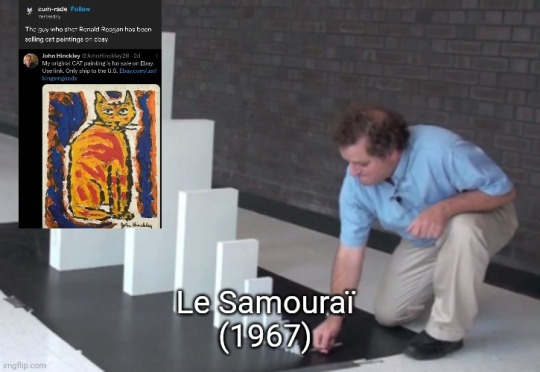
The impact of Le Samouraï (1967) can be traced to the present day and this post by Tumblr user @cum-rade
In this essay I will outline the series of events leading the creation of the above post and the lasting effects of Le Samouraï on modern culture.
Timeline
November 1955 Vietnam War begins
1967(?) Le Samouraï begins production directed by Jean-Pierre Melville
June 1967 A time traveler* burns down the studio attempting to end production
October 1967 Release in the France
1972 dubbed release in the USA titled as The Godson to capitalize from The Godfather's Success
1972 Arthur Bremer's relationship ends, quits his job, plans to assassinate Richard Nixon or George Wallace, and ultimately shoots George Wallace while posing as a supporter and living out of his car
April 1975 Vietnam War ends
1975 Paul Schrader writes the script for Taxi Driver, inspired by assassination attempts and Le Samouraï while living out of his car
Summer 1975 Taxi Driver has begun filming
September 1975 Lynette "Squeaky" Fromme of the Manson Cult attempts to assassinate President Gerald Ford
February 1976 Taxis Driver is released staring Robert De Niro, Cybill Shepherd, & (child) Jodie Foster and directed by Martin Scorsese
Break for Taxi Driver Rundown (spoilers)
Robert De Niro plays Travis Bickle a lonely, mentally ill, white, male Vietnam War vet who drives a taxi
Travis thinks the world is a dirty horrible place that somebody should clean up
Travis says the iconic line "We live in a society"*
Travis is infatuated with Betsy (played by Cybill Shepherd)
Travis goes on a few dates with Betsy
Betsy breaks up with Travis because he brings her to a pornographic theater
Travis deletes Facebook, hits the gym, and lawyers guns up
Travis attempts to assassinate a political candidate while posing as a supporter
Travis gets away cleanly
Travis kills a bunch of pimps to save a sex trafficking victim named Iris (played by Jodie Foster)
Travis puts a gun to his head and pulls the trigger
Travis is celebrated as a hero
Timeline Continued
John Hinckley Jr. watches Taxi Driver (1976) at least 15 times
Hinckley becomes infatuated with 14 year old Jodie Foster
1980 Hinckley moves to Connecticut to stalk Jodie Foster
Hinckley emulates The Joker Travis Bickle IRL
October 1980 Hinckley is arrested for illegal possession of a firearm while stalking President Jimmy Carter
Hinckley chooses to support Ronald Reagan
1980 American Gigolo, directed by Paul Schrader is released as the second installment of Schrader's list of movies based on Taxi Driver
January 1981 Reagan becomes president of the USA
March 1981 Hinckley shoots Reagan and several others
1992 Light Sleeper, directed by Paul Schrader is released as the third installment of Schrader's list of movies based on Taxi Driver
1997 Le Samouraï re-release in the USA
2007 The Walker, directed by Paul Schrader is released as the final installment of Schrader's list of movies based on Taxi Driver
2011 Drive inspired by Le Samouraï staring Ryan Gosling is released
That greentext where Anon pretends to be Ryan Gosling's character in Drive takes place
2016 Hinckley is released from psychiatric care
2019 Joker, (which is the same movie as Taxi Driver) is released staring Robert De Niro who's brains are blown out on screen
Joker meme culture captivates lonely males
2020 a ruling allows Hinckley to showcase his artistic work under his own name
2022 all restrictions on Hinckley are lifted
2023 Tumblr user posts about Hinckley's artwork
Le Samouraï is the basis of the Loner Male movie genre and lead to Ronald Reagan being shot. You can continue the legacy of Le Samouraï by missing the point of of the genre. Do toxic masculinity, it's very cool* and you can be just like Arthur Bremer, Travis Bickle, John Hinckley Jr., and Mr. The Joker.
*false
#ronald reagan#film#taxi driver#joker 2019#le samourai#high effort shitpost#masculinity#suicide#sex trafficking#gun violence#slightlyspooky originalpost
9 notes
·
View notes
Text
First reformed wasn’t even that good but it convinced everyone that Paul schrader was talented again so then he took that praise and goodwill and made a mediocre Oscar Isaac and Tiffany haddish movie with the same exact themes as all his other movies. And then it was like well okay that was fine but we still want a first reformed 2. So they let him make yet another movie and then he came up with… master gardener… which imo he should be in jail for
13 notes
·
View notes
Text
are there any famous screenwriters that are famous for screenwriting (as opposed to directing, even if they do direct on occasion) other than like paul schrader, charlie kaufman, aaron sorkin, and nora ephron. i feel like thats suck an elite class to be in everyone talks about like 'the brand name auteur' but to be known to the public as a screenwriter is such a hard thing to accomplish
2 notes
·
View notes
Text
jason miller from The Exorcist almost played travis from Taxi Driver, and paul schrader who wrote for Taxi Driver later directed what is considered the other most boring sequel to The Exorcist... there's 2 versions of this movie with 2 different directors because both were boring in different ways ...
youtube
#well i dont know if miller could have done taxi driver but now we know schrader couldn't do the exorcist#cw flashing#Youtube#the exorcist#taxi driver
3 notes
·
View notes
Text

Robert De Niro in Taxi Driver (Martin Scorsese, 1976)
Cast: Robert De Niro, Jodie Foster, Cybill Shepherd, Harvey Keitel, Albert Brooks, Leonard Harris, Peter Boyle. Screenplay: Paul Schrader. Cinematography: Michael Chapman. Art direction: Charles Rosen. Film editing: Tom Rolf, Melvin Shapiro. Music: Bernard Herrmann.
It's a truism that movies and dreams have much in common: We experience them in the dark; we ascribe portents and personal insights to them; they present us with a non-linear experience, in which events don't follow in logical sequence, and point of view is continually shifting. And nobody knows this better than Martin Scorsese, who gives us in Taxi Driver a story that appears to be realistic but which, the more we ponder it, proves to be dreamlike. Take the conclusion of the film, for example: After slaughtering a roomful of brothel patrons and personnel, Travis Bickle (Robert De Niro) attempts suicide but fails, and in a coda we see that he has become a hero, that the 12-year-old prostitute Iris (Jodie Foster) he has tried to rescue has returned to her parents, and that Betsy (Cybill Shepherd), whom he has frightened by stalking, now regards him as a hero, too. It is the most unlikely of "happy endings" in an era that had begun to mock such conventional resolutions. So it's no surprise to find that there are those who think that the entire sequence is a dream, or a fantasy of the dying Travis. Certainly there are things in the sequence that don't entirely jibe with a realistic interpretation, and not just the fact that Scorsese himself is not inclined to anything so square as a happy ending. The news clippings on the wall of Travis's apartment don't look like actual clippings, and the photograph of Travis included with them hardly looks like De Niro. Iris has been adamant about never returning to her parents. And Betsy seems unlikely to warm up to Travis after he shocked her by taking her to a pornographic movie. Scorsese has never endorsed, nor fully repudiated, this interpretation of the ending as a fantasy, but the screenwriter, Paul Schrader, has said that the ending brings the film full-circle, meaning that Travis's murderous loner cycle will begin all over again. I think it better to regard the whole film as a nightmare about contemporary urban loneliness, filtered through what Scorsese knows best: motion pictures. From the moment the saxophone begins playing Bernard Herrmann's theme, we are cast into the mythical realm of the film noir, a genre dear to Scorsese's heart. Cinematographer Michael Chapman turns 1970s New York City into a city of dreadful night, a neon-lighted hell full of smoke and steam, and Scorsese manipulates extras into demonic gatherings. One of the more shocking sequences takes place when Scorsese himself plays a passenger in Travis's cab, making him wait outside an apartment house and watch the silhouette of the passenger's wife on a window shade as she has a meeting with her Black lover. (The passenger uses an uglier word to describe the lover.) But the scene is not shot realistically: It should be clear to even the most naïve movie-watcher that the silhouette has been crafted with special lighting, a kind of distancing device that puts the emphasis on the film as a parable and not as a docudrama. More and more, I come to think of Taxi Driver as Scorsese's greatest film because it makes us not only reflect upon and challenge what movies are doing to us but also because it gives us a sense of modern anomie unequaled in any other film. Travis Bickles are all around us, and in America, with its laxness about weaponry and its emphasis on individual liberty, they continue to appear, whether in the form of Arthur Bremer -- the man who attacked George Wallace, whose diaries De Niro studied while creating Travis Bickle -- or John Hinckley, whose Taxi Driver-colored fantasies drove him to shoot Ronald Reagan to attract Foster's attention, or the next psychopath with a grievance whom we'll learn about after the tragic fact. But Scorsese should not be blamed -- indeed, he and De Niro should be praised as highly as possible -- for bringing Travis to our attention, for taking our nightmare and reprising it for us so effectively.
3 notes
·
View notes
Text
First Reformed and interpassivity

This last term, I spent a lot of time writing about Paul Schrader's haunting 2017 film First Reformed. In the wake of his new film Master Gardener's impending wide release, I have rewatched it again, in addition to his more recent film, The Card Counter. First Reformed has developed quite the following online in the six years since its initial release, and even some fairly trafficked memes, which really speaks to the breadth of what is so captivating about the film.
This post is thinking through ideas about agency and personal responsibility with regard to climate anxiety, namely an anxiety that attempts to satisfy guilt, through interpassivity, which satiates the individual, but does nothing to benefit any substantive material action to combat climate crisis.
One of the key theoretical throughlines between contemporary neoliberalism and conservative ideology is the prominence of possessive individuality. The environmental journalist Martin Lukacs lays out two principal objectives of neoliberalism as scaffolded by the likes of Reaganomics and Thatcherism: (1) to dismantle barriers to the exercise of unaccountable private power and (2) to erect those private powers to the exercise of any democratic public will. We see this through the nonchalance of a constant reshuffling of privatization laws throughout the last four decades, particularly with regard to the oil sector, but certainly applicable to other forms of energy commerce.
What’s more prescient though to this essay, is how neoliberalism has come to shape the modes and affects of its subjects and their everyday lives:
[Neoliberalism’s] trademark policies of privatization, deregulation, tax cuts and free trade deals, with atmosphere like a sewage dump, has hamstrung our ability, through the instrument of the state, to plan for our collective welfare. […] Studies show that people who have grown up under this era have indeed become more individualistic and consumerist. Steeped in a culture telling us to think of ourselves as consumers instead of citizens, as self-reliant instead of interdependent, is it any wonder we deal with a systemic issue by turning in droves to ineffectual, individual efforts? We are all Thatcher’s children. […] Neoliberalism has taken this internalized self-blame and turbocharged it. It tells you that you should not merely feel guilt and shame if you can’t secure a good job, are deep in debt, and are too stressed or overworked for time with friends. You are now also responsible for bearing the burden of potential ecological collapse.
Lukacs deems it eco-consumerism, but the term we have adopted more recently is green capitalism, a recapitulation of the tragedy of the commons, whereupon we (collectively and individually) overuse resources, but specifically resources that hurt the ecosystem. The important takeaway though, is that while these are unethical individual actions, they pale in comparison to the true threat to the planet, which is imperial militarism. Individual impacts are practically irrelevant; every person and factory on the continent could cease all emissions and the climate war would rage on, because the US military is the primary belligerent. The American military produces high enough greenhouse gases to render the entire globe in continual climate crisis. Individual environmental impact becomes more of a hyperbolic categorical imperative than an ontological urgency.
Schrader’s film First Reformed, contemplates environmental responsibility through its narrative about the life of an Upstate New York Protestant minister named Ernst Toller (Ethan Hawke), who struggles with staying devout amidst a cancer diagnoses, shrinking service attendance at his church, and a crisis of faith. At first, Toller looks inward, seemingly finding solace in the writing of the Trappist monk Thomas Merton, but eventually seems to come to terms with his moral responsibility to engage with the outside world. One of his congregation members, a pregnant woman named Mary Mensana (Amanda Seyfried) approaches him about her husband, Michael Mensana (Phillip Ettinger) an anti-natalist growing more and more detached from his life. Michael is enamored with radical climate activism and would probably be deemed by most film viewers as an ecofascist. Mary finds a suicide vest in Michael’s workshop and at first, Toller condemns Michael. However, following Michael’s suicide later in the film, Toller becomes more and more empathetic to Michael’s philosophies as he pours over the research on Michael’s laptop and becomes familiar with the realities of the climate crisis.

First Reformed (2017 dir. Paul Schrader)
At a glance, it is not a film about climate war directly: its primary focus appears to be the specific story of a man who is pushed beyond his ethical limits and spurred into action. This is methodic narratively for Schrader, who often pens screenplays with protagonists driven to no longer function in their circumstances. His screenplays—Taxi Driver, Rolling Thunder, Bringing out the Dead, and recently, The Card Counter)—would never be accused of formulaic writing, but tend to depict protagonists in this same way. Toller fulfills the Travis Bickle archetype, although arguably considerably less unhinged at the start, by the end of the film he regularly consumes a cocktail of Pepto-Bismol and Whiskey, a telltale sign of mental instability. The film climaxes with a standoff between Toller and Edward Balq (Michael Gaston), a millionaire CEO who financially benefits the church, but also owns a large polluting factory nearby and invests in oil companies. While the church celebrates its 250th anniversary, with a full attendance for service, Toller plans to wear Michael’s suicide vest and kill everyone including Balq, who is attendance. At the last minute, Toller changes his mind. He sees Mary entering the church, which compels him to forgo the suicide bombing. Instead, he wraps himself in barbed wire and prepares to drink a glass of drain cleaner. First Reformed through its narrative is wholly consumed with the environment and the extrinsic anxiety of interpassivity, of contribution that does nothing to resolve actual conflict. How can we understand ecological interpassivity and its anxieties?

Interpassivity by Robert Pfaller. Edinburgh University Press, 2017.
What is interpassivity? German critical theorist Robert Pfaller coined an aesthetic theory of delegated enjoyment which he called interpassivity. Using an Althusserian framework, Pfaller catalyzes the peculiar phenomena of detached passivity misconstrued as interactivity. Since the concept’s origin in 1994, interpassivity has accelerated into a vibrant scholarship taken up most notably by Slovenian philosopher and internet meme Slavoj Žižek, who credits Jacques Lacan’s Seminar VII as interpassivity’s conceptual heritage. In that seminar, Lacan muses on the virtue of The Chorus in Greek tragedy. Pfaller sets substitutional proclivities as the central nature of interpassivity. Nonautonomous inaction will satisfy; it is all that the individual needs. On the topic, Žižek wryly asserts that the interpassive individual’s psychological interior can think about whatever they want, no matter how obscene or incriminating: “To use an old Stalinist expression: whatever I am thinking, objectively I am praying." (p. 32).
The discourse of interpassivity first begins in the early 1990s, when much of culture studies and psychoanalytic theory was consumed with ideas surrounding interactivity, both in art and in technology. In more recent years interpassivity has seen much scholarship surrounding the phenomena of streaming content, whereupon the viewer is no longer purveying agency through ludonarrative in playing a game themselves, but passively, watches someone else do it, and thus, achieves the same pleasure principle. Pfaller’s second full-length book on interpassivity is titled On the Pleasure Principle in Culture: Illusions Without Owners. The framing of interpassive interactivity as the process of self-assurance through illusion is precise. It captures the illusory nature of the act of interpassivity, especially regarding environmental activism. We believe that we are conducting ourselves altruistically but in reality, we are not. One cannot help but recall Žižek’s famous proclamation that not only do we not really know how things are, but we also don’t even know how things appear to be.
Let us anticipate that the neoliberal environmental nonprofit industrial complex for interpassivity, is much the same as Louis Althusser casts the sports industry for ideological apparatus. They are both reliant on socialized principles of self-abandon; the central desire is to forget. Environmental neoliberalism is ideological because it reproduces the conditions of production of labor forces and the social relationships of that production. Under its present media surveillance, the nonprofit sector ensures that people will work in the same way next year as they do this year, and that they will integrate expectantly into society. What is astounding about this reproduction through ideological practices is that everyone starts participating by themselves without having to have their own secret government entity forcibly harassing them the whole way. The readiness to act spontaneously cannot be achieved through violent means; violence and repression serve at best, to make people passive. According to Althusser, the fact that people are active without being coerced is an outcome of ruling ideology (pp. 232-273). Contemporary neoliberal life is often an exercise in puritanism: the guilt that surrounds the personal responsibility of eco-consumerism is the centralizing affect for the drive to recycle, to consume ethically, and be on the right side of every controversy. In this way, interpassivity is the ultimate failsafe. For the neoliberal bicameral mind, donations to the environmental nonprofit excuse away subsequent anti-environmental acts that could be incurred and gives a sense of fulfilling one’s societal expectation, thus relieving two anxieties at once. Consider the patron who, when ordering a drink at Starbucks, puts two dollars into the collection tin for an environmental nonprofit. The patron experiences slight discomfort or anxiety and attempts to assuage the affect by what they believe is action, against passivity, through altruism. In reality, this is interpassivity at work. The subject allows the nonprofit complex to act as proxy and they feel temporary elation, like smoking a cigarette to ease the anxiety of nicotine cravings, which ironically strengthens the addiction.
Pfaller offers a defense of interpassivity in the 2017 introduction to his book on the subject:
“…If we take seriously Althusser’s idea that becoming a subject is one of the key mechanisms of ideological subjugation (see Althusser, 1971), then becoming an active subject cannot be turned into any universal political solution. […] The ‘theoretical anti-humanism’ of the concept of interpassivity has from the very beginning united all who have been interested in this perspective. As a result of this, though not exclusively so, the theory of interpassivity was enthusiastically received. And so, just as Althusser was a theoretical anti-humanist, we were theoretical interpassivists. However, the question of whether one should also feel sympathy with the practices of interpassivity or not was a wholly different and open matter at that time. (p 4-5).
Here we see the return of a familiar structural Marxist claim, rejecting notions of human essence and transcendentalism and further cementing the notion of hegemonic systems of socio-economic ideology. Within the theoretical lineage of Lacan->Althusser->Žižek, Pfaller can readily problematize the idea that inaction is amoral, if action itself is not inscrutable (a rudimentary concept in the realm of antihumanism).
Whether or not interpassivity as it was originally envisioned in relation to interactivity by Pfaller in 1996, can be qualified as a moral or sympathetic act, remains to be seen. One could potentially have more sympathy for this concept of interpassivity in other avenues than how this essay recalibrates the term toward the neoliberal act of interpassive activism. Interpassive action is so applicable to our contemporary lives, even in progressive circles. An oft-hastily muttered epigram we hear frequently: there is no such thing as ethical consumption under capitalism, as the justification for all kinds of questionable purchases. This phrase has no clear etymology, although internet historians have traced it back to several meme accounts on Twitter and Tumblr. We can imagine it however that it is a likely descendent from readings of Adorno and Horkheimer, among others. This ends/means justification is precisely the kind of nihilism that the interpassive act thinks it is counteracting, when in reality, it is an extension of that nihilism:
In interpassive behaviour, people take up selective contact with a thing in order, in exchange, to entirely escape that very thing – and indeed, not only as we have established to begin with, with regard to an identification with an illusion. Interpassivity is thus a strategy of escaping identification and consequently subjectivation. Precisely there, where it is suggested that they become self-conscious subjects (through interpellation in the sense of Althusser [1971]), people seize interpassive means to flee into self-forgetfulness. (p 7-8).

Sokoban, Hiroyuki Imabayashi, 1982.
At first, this definition flummoxes, because we think of the altruistic act of activism, particularly in the spectra of nonprofits and social media as a supremely self-conscious endeavor, one that is all about being witnessed by others: ‘look how benevolent I am!’ In reality it is as Pfaller describes: an act of anxious desire to escape the thing, to no longer conceive of, or participate in, the anxieties of climate change. Althusser reflects on the “teeth-gritting harmony” of the ideological state apparatus (p. 248), how it manifests, an existence that should repulse any Marxist, one that causes its subject to live anxiously. The act of interpassivity then, is an illusory break from that anxiety, one that suggests ideological freedom, but only the suggestion.
Pfaller (and Žižek) muse on interpassivity as an anti-ideological phenomenon, or at least, an act that pertains to some new form of ideology that does not rely on becoming subject (in the Althusserian consideration), which would suggest a potential morality of the interpassive person, a person sidestepping the conditions of ruling hegemonies. This is an idealistic reading of interpassivity, one that does not consider all of its problems, the most immediate of which seems to be its compulsory sense of completion. It is not the compulsion itself that is concerning but that this compulsion somehow actively underestimates the ruling ideology, a grave error. It should be the purpose of postmillennial theory to de-hegemonize our unconscious to try and see how socio-cultural phenomena like interpassivity might operate in service to the state, rather than for the holistic ethics of the individual citizen-environmentalist.
First Reformed is a film that presses this point, on the pathos of the individual and their ethical responsibilities for living in the world. Interpassivity surrounds the idea of participation as the locus for environmental action: will you step up, will you act? The film is all about absolutions, about imperatives. It’s also a deeply personal film for its director Schrader, who was raised by strict Dutch Calvinists in Grand Rapids and had intended to become a minister after studying theology at university. But a chance encounter with film critic Pauline Kael steered him toward film criticism instead. He published a book on ‘slow cinema,’ which highlighted three directors, most notably his primary inspiration, Robert Bresson. Schrader began penning screenplays in the early 1970s, his first major being Sydney Pollack’s The Yakuza, followed by his seminal work with Martin Scorsese, Taxi Driver. Over the course of his career, he has penned nearly 30 screenplays and has directed 24 films, most of which, saw him as the screenwriter.
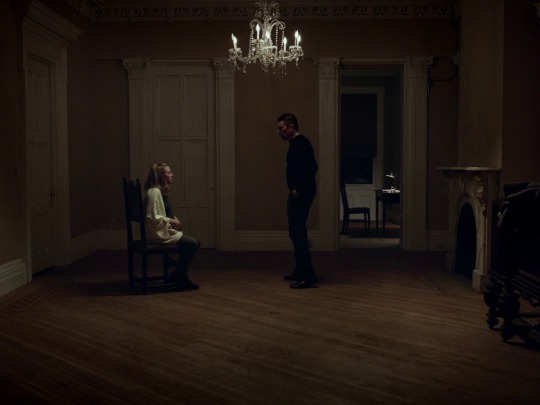
First Reformed (dir. Paul Schrader, 2017).
However, beneath the surface of the film’s appearance of a more standard arthouse drama character story, the film is bursting with environmental commentary. After Michael’s suicide, Mary gives Toller his laptop, where he finds endless streams of articles, videos, and digital ephemera surrounding the climate crisis. The film contemplates the delusion of optimism in the wake of climate war, while also folding its arms at the nihilism of giving up too. It’s a comforting spiritual characterization of our ethical circumstances. In an interview with Cinéaste, Schrader muses on the ecological anxiety at the heart of the film’s spiritual narrative: eschatology:
Christianity and Judaism have been talking about it from the very beginning. What is our purpose on earth? What is the goal? We have now entered a moment in time where we can actually see, if we stand on our tippy-toes, the end of our duration as a species. What was for thousands of years a hypothetical discussion—what happens when mankind no longer exists?—has now become an actual discussion. It gives shading to the search for meaning or purpose. […] We have a threat that we can’t do anything about, or at least that we have decided we don’t want to do anything about. It’s probably too late to reverse that. In fact, I do think that it is too late—too late to save human life on this planet. (pp. 28-33).
End times takes on a very different connotation when you are living in it, even if it is a centuries-long procession. The severity of these ramifications does not necessarily change much in terms of narratology, but it does alter how we come to a film’s narrative and relay it back to our own climate crisis.
Schrader credits Deleuze’s film theory and Andrei Tarkovsky’s cinematography as the most crucial influences in his own precise use of duration in First Reformed. In his film theory book Cinema 2, Deleuze catalyzes Henri Bergson’s condensation of time as a bridge to reconstitute together movement-image and time-image in film. He is interested in how characters in film move through space and time, in the splitting of time that occurs when film moves from past-to-present, through what is projected on to the screen, “the uniting of an actual image and virtual image to the point where they can no longer be distinguished.” (p. 335). Deleuze names this unification crystal-image. Schrader puts crystal-image this to use affectively, in a way where the viewer is forced to sit with anxiety in an extended shot, or pan, feeling the weight of dread grow, as time becomes uncertain and notions of the speculative begin to take root.
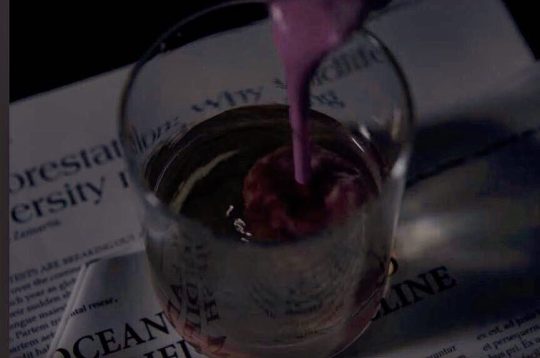
First Reformed (dir. Paul Schrader, 2017).
First Reformed’s most experimental sequence embodies this idea, and it occurs while Toller and Mary are doing an intimate breathing exercise together. The cinematography shifts and starts panning over various scenes of industrialization and environmental devastation from a Gods-eye view, in the mode of Godfrey Reggio’s Koyaanisqatsi. First we see the ocean, filled with oil; a seemingly unending mountain of rubber tires; rows and rows of industrial smokestacks and lit up factories; a logging bulldozer in the process of deforestation; shots of what first appears to be a village’s rock-wash, but then reveals that it is not a rock-wash, but an enormous amount of garbage; a large and spreading brushfire, and finally, a shot of an oil tanker, partially submerged in a stagnant ocean, black with oil. In general, Schrader is very reserved in focused frame shots, with very sparse movements; only one dolly was used in the filming of First Reformed. What results is a film that often at first feels like a stage production, until these moments of experimental environmental critique, where suddenly the cinematography feel more like the collage films of Adam Curtis than Taxi Driver.
In First Reformed we see Toller, Mary, and others struggle to come to terms with the challenge left by Michael, of what it really means to care about the world and the people living in it. This feels more evident when Toller first meets Balq, the antagonist. At Michael’s wake, Abundant Life, the evangelical megachurch that owns First Reformed, has their children’s choir perform an acapella rendition of “Who’s Gonna Stand Up” a protest song by Neil Young, from his 2014 album Storytone. Balq is annoyed because a local news website reported on Michael’s wake, calling it a political protest, and mentioning both First Reformed and Abundant Life by name. The service was held at a toxic waste site, one that he insists was cleaned up by EPA superfunds (it clearly was not cleaned up). This infuriates Toller who recognizes how materially meaningless the choice of song really is, when set against the profound damage being done by Balq’s companies. He asks Balq if God will forgive us. In a way, Toller is recognizing the danger of interpassivity for the neoliberal imagination. While the Abundant Life pastor Joel Jeffers (Cedric Kyles) tries to hastily apologize to Balq, Toller becomes apathetic, seemingly aware how even the thing Balq is qualifying as an attack against him, is largely ineffectual.
Life during climate war is suffocated with the fumes of anxiety, it is omnipresent. We see Michael in FirstReformed devastated by the realities of the damage done; he cannot bring himself to watch his child be brought into the world he no longer wishes to be a part of. Michael’s devastation leads him to construct a suicide vest. Mary finds the vest, and Toller takes it. It is unclear to the audience if Michael’s decision to end his own life is because he realized Mary had discovered it, or if he truly could not bear it anymore. Regardless, the anxieties both Michael and Toller emanate feel enormously reflective of the kinds of liberal anxieties that interact with environmental inactions, that render zero impact. The difference is in their determination. These are two people preparing to give their lives for the hope of meaningful material benefit. That’s a radical act of altruism, not interpassivity. In the end, Michael dies, and Toller decides against the suicide bombing, but the contemplation feels endlessly relevant to a moment where collectively, we are beginning to reevaluate what it means to live in climate war.
Althusser, Louis. On the Reproduction of Capitalism: Ideology and Ideological State Apparatuses. Trans. G.M. Goshgarin. (New York: Verso Books, 2014). 232-273.
Deleuze, Gilles. Cinema 2: The Time-Image. Trans. Hugh Tomlinson and Robert Galeta. (Minneapolis, MN: University of Minnesota, 1986). pp. 335.
Haynes, Todd. Safe Sony Pictures, 1995. 1h 59m.
—. “Todd Haynes and Julianne Moore on Safe.” Sneak Peaks. The Criterion Collection. Dec. 15, 2014. 36m.
Lukacs, Martin. “Neoliberalism has conned us into fighting climate change as individuals” (London, UK: The Guardian, July 17, 2017).
Nam, Sean. “Hungering and Thirsting for Righteousness: An Interview with Paul Schrader.” Cinéaste Vol. 43, No. 3 (Summer 2018), pp. 18-23.
Pfaller, Robert. Interpassivity. (Edinburgh University Press, 2017).
—. Pleasure Principle: Emotions Without Owners. Trans. Lisa Rosenblatt. (New York, Verso Books, 2014).
Sanders, Barry. The Green Zone: The Environmental Cost of Militarism. (Chico, CA: AK Press, 2009).
Schrader, Paul. First Reformed. A24 Films, 2017. 1hr 53m.
Žižek, Slavoj. The Sublime Object of Ideology. (New York: Verso Books, 1989). p. 32.
—. Welcome to the Desert of the Real: Five Essays on September 11 and Related Dates. (New York: Verso Books, 2002).
#first reformed#paul schrader#film#essay#ecoanxiety#interpassivity#zizek#pfaller#film critique#a24 films#ethan hawke#climate action#climate war#climate crisis#calvinism#christianity#althusser
10 notes
·
View notes
Text
Affliction (1997)
One of the hardest things to do when making an original piece of art is portray the real life surroundings of its plot. The film that goes above and beyond that encapsulation is the Coen Brothers' "Fargo" which is as perfect a film as you can get. But that's not the topic of this post. The following year came a film that has the desolate look of "Fargo", but in a more straightforward Hollywood fashion. Paul Schrader's "Affliction" is a competent piece of cinema that gets its strength more on its substance, but not in the plotting.

In the snowy hills of New Hampshire, officer Wade Whitehouse (Nick Nolte) has a lot of emotional baggage. He's in the middle of a messy custody battle with his ex-wife (Mary Beth Hurt), his friend (Jim True-Frost) is a suspect in the death of a Massachussetts businessman (Sean McGann) during a deer hunt, he is conflicted as to whether to marry his girlfriend Marge (Sissy Spacek) and is still haunted by his abusive childhood at the hands of his father Glen (James Coburn). When Wade's mother dies, he and his brother Rolfe (Willem Dafoe) must confront their personal demons while also getting to the bottom of a mystery involving the deceased businessman and his boss Selectman Gordon Lariviere (Holmes Osborne Jr.) pertaining to a dodgy real estate deal.

"Affliction" has the appearance of a film steeped in mystery and intrigue, but very little of it actually bears any real suspense. The story involving the businessman's death is treated as an ordinary subplot rather than the main story. Another criticism is how the town and its citizens are shown. The desolate nature of the small town lacks any real interest for its urban legends and old wives' tales. The characters are all creations of Hollywood from their mismatched accents (Minnesotan sounding people from New Hampshire) to costumes that look like a JCPenney catalog. It was those characteristics done right in "Fargo" that elevated that film to legenday status, the idea of a mystery being given full treatment, the characters speaking freely in their own dialect and the spontaneous flow of life going at a natural pace. In "Affliction", it's more like make-believe.

The one part of "Affliction" that is done well is its most important aspect, that of a father and son relationship in turmoil. Schrader's succeeds in showing us flashbacks that look like home movies down to the graininess of the film. We understand why Wade is not an effective parent, why he cannot commit to marriage and why he is on the brink of insanity. The narration by Rolfe connects the dots in showing the relevance between the Whitehouse family and the businessman's death, despite the latter's less than stellar use in the plot. When we find out the real story in the epilogue, we've stopped caring.
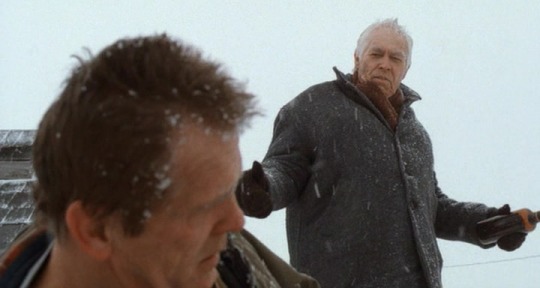
Nick Nolte gives one of his most effective performances as Wade. He's the guy you hate because of his callousness but the same time feel sorry for him because of his childhood scars. His rugged nature mixed in with his sensitivity is worn all over his face. James Coburn, in a well deserved Oscar winning performance, makes Glen Whitehouse into the Father From Hell, a lowlife with the most disdain for the human race. The final scene between the two is a testament to their acting chops and the lengths they can go to churn out characters with dimension. The rest of the cast (Spacek, Dafoe, Osborne, True-Frost) are also terrific in otherwise thankless roles. The one acting performance that was off-putting was that by Brigid Tierney as Wade's daughter Jill, which was all whining and no human dimension. Her scenes come off as cheap, direct to video family theatrics, not an R-rated Hollywood indie film directed by a Hollywood legend like Paul Schrader.

In addition to Coburn's Oscar win for Best Supporting Actor, the only other nomination was a well deserved one from Nick Nolte in the Best Actor category. "Affliction" could have been a masterpiece like "Fargo" if it only adhered more to the urban legend mentality and breathed life into its surroundings with more visual and characteristic subtlety. As it is now, "Affliction" is "Fargo-lite".
7.5/10
#dannyreviews#affliction#paul schrader#nick nolte#mary beth hurt#jim true-frost#sissy spacek#james coburn#sean mccann#willem dafoe#holmes osborne jr.
2 notes
·
View notes
Text
The End of Movies:
Steven Spielberg sees an announcement that "Eternals 5" will be four hours long. A peaceful expression passes over his face. He calmly walks to the nearest movie theater, buys a random ticket and a big bag of buttered popcorn and gets a seat near some other moviegoers. He looks over to his left: he's surprised to see Tom Cruise, nodding reassuringly. Who’s next to Tom? Francis Ford Coppola. James Cameron is a few seats up with Paul Schrader. Countless other artists and filmmakers are also there.
Everyone looks at each other with a melancholy but true smile. It takes a minute, but they all eventually understand why they’re here. Finally, Martin Scorsese comes in and sits down next to Steve and Tom, saying “Sorry I’m late!”. But they just broadly clap him on the shoulder.
Then the lights go down, and the movie starts: It's black-and-white footage of a train coming towards the camera. Then the train crashes out of the screen, exploding into the theater, leaving no survivors. The End of Movies.
5 notes
·
View notes
Note
Ethan Hawke - smash or pass (physically/ intellectually/ aesthetically/ others) ?
Just read a very clickbaity post by IndieWire titled ' Ethan Hawke so comfortable directing Maya Hawke's sex scenes in WildCat'. While I despise clickbaity headings, it got the job done by making me want to read the article, because I was so sure that line was being presented out of context (and it was) .
I'd say it's a smash, lol. Which used to not be the case. I didn't consider Ethan Hawke attractive (I think because of the teeth) and I also thought he had this loser vibe to him. I don't know what was going on in my brain. But taste does change, along with age and I found myself appreciating him more and more. And that had a contribution to the way I see him from a physical attraction perspective. He is some cool indie darling of American cinema, but I find him intelligent and well-spoken. There's no nonsense there. I'm also a big fan of his projects and the work he did in First Reformed (Paul Schrader) must have had a big contribution to me changing my opinion towards him. And that led me to go back and either revisit or watch for the first time some of his films.
As to the clickbait-y article title, it's so ridiculous. I've read the Variety article and there was nothing to indicate any sort of creepiness in that regard. Hawke is the director of the film in which Maya plays the lead role. Yes, there are two sex scenes, but they talked about working with intimacy coordinators and how this is a team work, with other people involved. I don't get the need some media outlets have of getting creepy about it, especially in this father-daughter project. They had a professional approach, which is evident from the way they talk about the project overall and what will be their contribution.
2 notes
·
View notes